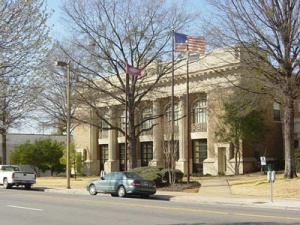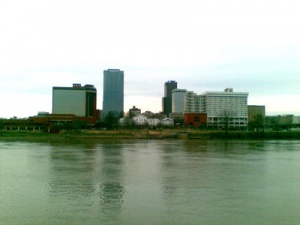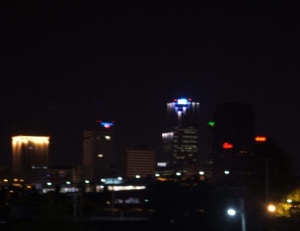Difference between revisions of "City of Little Rock"
| Line 4: | Line 4: | ||
The '''City of Little Rock''' is a public entity that governs Little Rock, Arkansas. City government is divided into a number of city departments, citizen services offices, commissions, bureaus, and task forces. Little Rock is led by the [[Little Rock Mayor's Office]], the [[Little Rock City Manager's Office]], and the [[Little Rock Board of Directors]]. Services provided by the City of Little Rock are funded by a series of [[bonds]], and accomplished by approximately 2,500 employees. The city has an extensive [[municipal code]]. | The '''City of Little Rock''' is a public entity that governs Little Rock, Arkansas. City government is divided into a number of city departments, citizen services offices, commissions, bureaus, and task forces. Little Rock is led by the [[Little Rock Mayor's Office]], the [[Little Rock City Manager's Office]], and the [[Little Rock Board of Directors]]. Services provided by the City of Little Rock are funded by a series of [[bonds]], and accomplished by approximately 2,500 employees. The city has an extensive [[municipal code]]. | ||
| − | Little Rock City Hall is located at 500 West Markham Street. | + | Little Rock [[City Hall]] is located at 500 West Markham Street. |
===Departments=== | ===Departments=== | ||
Revision as of 18:00, 29 February 2008
The City of Little Rock is a public entity that governs Little Rock, Arkansas. City government is divided into a number of city departments, citizen services offices, commissions, bureaus, and task forces. Little Rock is led by the Little Rock Mayor's Office, the Little Rock City Manager's Office, and the Little Rock Board of Directors. Services provided by the City of Little Rock are funded by a series of bonds, and accomplished by approximately 2,500 employees. The city has an extensive municipal code.
Little Rock City Hall is located at 500 West Markham Street.
Contents
Departments
The City of Little Rock has fourteen departments dedicated to four areas of service: public safety, infrastructure, economic development, and quality of life.
- City Attorney's Office
- Community Programs
- District Courts
- Finance
- Fire
- Fleet Service
- Housing and Neighborhood Programs
- Human Resources
- Information Technology
- Parks and Recreation
- Planning and Development
- Police
- Public Works
- Zoo
Commissions, Bureaus, Task Forces
- Advertising and Promotion Commission
- Airport Commission
- Ambulance Authority
- Americans with Disabilities Act Citizen's Grievance Committee
- Animal Services Advisory Board
- Arkansas Arts Center Board of Trustees
- Arkansas Museum of Discovery Board of Trustees
- Arts and Culture Commission
- Board of Adjustment
- Central Arkansas Library System Board of Trustees (CALS)
- Central Arkansas Transit Authority Board of Directors (CATA)
- Central Arkansas Water Commission
- Children, Youth, and Families Commission
- City Beautiful Commission
- Civil Service Commission
- Community Housing Advisory Board
- Construction Board of Adjustment and Appeals
- Historic District Commission
- Housing Authority Board of Commissioners
- Housing Board of Adjustment and Appeals
- Little Rock Planning Commission
- MacArthur Military History Museum Commission
- Midtown Redevelopment District No. 1 Advisory Board
- Oakland Fraternal Cemetery Board
- Parks and Recreation Commission
- Port Authority
- Project Progress Committee
- Racial and Cultural Diversity Commission
- River Market District Design Review Committee
- Sanitary Sewer Committee
- Sister Cities Commission
- Zoo Board of Governors
Other Offices
- Little Rock Mayor's Office
- Little Rock Vice Mayor's Office
- Little Rock City Manager's Office
- Little Rock Board of Directors
- Little Rock City Clerk's Office
History
Little Rock is the capitol city of the state of Arkansas. The city encompasses 122 square miles of incorporated land. In 2003 the U.S. Census Bureau estimated population of the city was 184,053, with 55.1% Caucasian, 40.4% African American, and 2.7% Hispanic. More than half a million people live in the Greater Little Rock Metropolitan area.
The site of the present city of Little Rock was first visited by European explorers in 1722, when Frenchman Jean-Baptise Bénard de la Harpe made note of La Petite Roche ("the little rock"). The first squatter on Little Rock land may have been William Lewis, who built a shelter at the present location of the Old State House in 1812. Six years later the Quapaw Indians ceded their lands west of the present Rock Street to the United States. The first Little Rock school opened under Jesse Brown in 1823, and the first hotel - the Anthony House - opened in 1841. By 1850 the city, expanding rapidly during the cotton boom, held about 2,000 denizens. By 1870 the number of residents had grown to 12,000.
In 1914 the Arkansas State Capitol was completed in midtown Little Rock, precipitating a building boom that culminated with the completion of the fourteen-story Donaghey Building in 1926. Downtown retail development - spurred by flagship department stores Pfeiffer & Blass and M.M. Cohn - grows until 1957 when the first suburban shopping center opens its doors at the corner of Asher & University.
In an attempt to recapture some of the trade draining into the western suburbs the Little Rock Unlimited Progress group inaugurates the ill-fated $4.5 million Metrocentre Mall on Main Street in 1970. Another notable retail failure was the Main Street Market project, which brought an enclosed shopping center to the downtown district in 1986. Ten years later the River Market represents the first successful initiative to renew retail opportunities and bring nightlife back into the city center. A five-year effort to site the William J. Clinton Presidential Center in the city is capped by the 2004 dedication of the Clinton Library, bringing additional visitor revenue into the historic River Market District.


